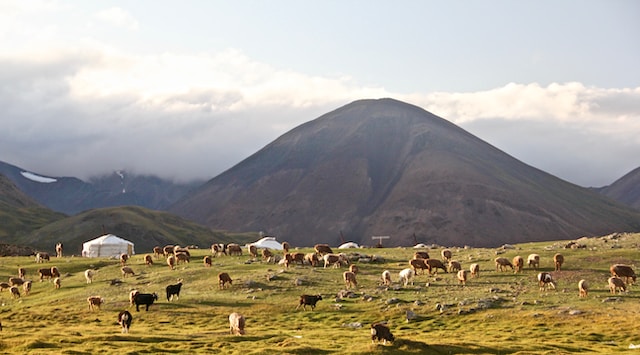Throughout the annals of history, nomadic communities have journeyed across the diverse landscapes of our world, from the expansive steppes of Mongolia to the sweeping deserts of Africa. Contrary to the sedentary world of modern urbanites, these cultures thrive in perpetual motion. Their inherent movement paints a canvas where lifestyle and natural fitness converge harmoniously. Dive with us into the rhythmic dance of nomadic life, revealing a blueprint of how fitness isn’t just a routine, but a way of life.
The Natural Movements of Nomadic Life

Every sunrise in a nomad’s life brings forth a plethora of physical activities. Setting up camp, which involves the assembly of shelters such as tents or Mongolian gers, necessitates a blend of strength, coordination, and endurance. Each action, from the stretch of lifting materials to the squat of securing pegs into the ground, mirrors exercises we’d find in a gym setting.
Then there’s migration, the very heartbeat of nomadic existence. This act isn’t a mere shift from point A to B. It’s a rigorous cardiovascular regimen, akin to the most intense aerobic workouts. Navigating rough terrains on foot, camelback, or horse, carrying belongings, and adapting to the unpredictable whims of nature make their journey a testament to physical and mental resilience.
A majority of nomadic groups weave their lives around livestock. The act of animal herding is no leisurely stroll. It’s an everyday marathon, a demanding cardiovascular workout, pacing through varying terrains, from sunbaked plains to rugged highlands.
Traditional Sports and Activities
While the chores of daily life contribute significantly to their fitness, the world of nomadic sports offers a different arena of physical prowess. Take, for instance, Mongolian wrestling. More than just a sport, it embodies a cultural narrative of agility, strategy, and strength. Research from reputable sources indicates that wrestling engages a vast array of muscle groups, enhancing core strength and flexibility.
Archery, a revered skill across numerous nomadic cultures from the Middle East to Asia, is a perfect marriage of muscular strength and mental focus. The precise control and strength required to shoot an arrow are reflected in studies like this one, emphasizing the holistic health benefits of the sport.
Horseback riding, often seen as a nomad’s signature activity, goes beyond the romantic. As outlined in this comprehensive research, riding engages the core, back, thighs, and pelvic muscles, making it an all-encompassing exercise form.
Diet and Nutrition in a Nomadic Lifestyle

Rooted in the rhythms of nature, the nomadic diet champions organic, unprocessed, and nutrient-rich foods. Direct access to fresh berries, pasture-fed meat, and dairy is a treasure trove of essential vitamins and minerals. The prevalence of fermented foods, like the Mongolian airag, introduces a healthy dose of probiotics, promoting optimal gut health, as highlighted in this nutrition study.
Mental Wellness and Nature
Physical well-being is just one facet of the gem. The nomadic lifestyle, bathed in the serenity of nature, carves out a sanctuary for mental rejuvenation. Several psychological studies corroborate the therapeutic effects of nature, underscoring reduced stress levels, enhanced mood, and overall mental well-being.
Lessons for Modern Society
Today’s urbanized, tech-saturated world stands in stark contrast to nomadic simplicity. Yet, nestled within the nomadic tapestry are golden threads of wisdom. Integrating natural movements, embracing outdoor activities, and seeking dietary balance can chart our course toward holistic health. As several fitness experts point out in this article, imbibing even a fragment of nomadic practices can uplift our health quotient. Mongolia has developed a lot over the years, especially in terms of technology. A great example could be their locally developed job posting platform Worki. Even though they’re keeping up with the world, they still preserve their nomadic culture and the healthy lifestyle connected with it.
Conclusion
In the age-old practices of nomads, we uncover a unique blend of movement, tradition, and a profound connection with nature. Their daily routines, rich in natural movement, combined with an organic diet straight from the earth’s bounty, offer a vivid blueprint for holistic health. Amidst the hustle of our urban lifestyles, these ancient practices serve as a reminder of the importance of balance, simplicity, and the therapeutic touch of nature.
As modern society increasingly searches for wellness solutions, the nomadic way of life provides rich insights. It’s a testament that genuine fitness and well-being aren’t just about hitting the gym or following the latest diet trend. Instead, it’s about harmonizing our lifestyles with the rhythms of nature, integrating natural movements, and nurturing our mental and physical health in tandem. Drawing inspiration from the nomads, we are reminded that the path to true well-being might often require looking back to move forward effectively.
